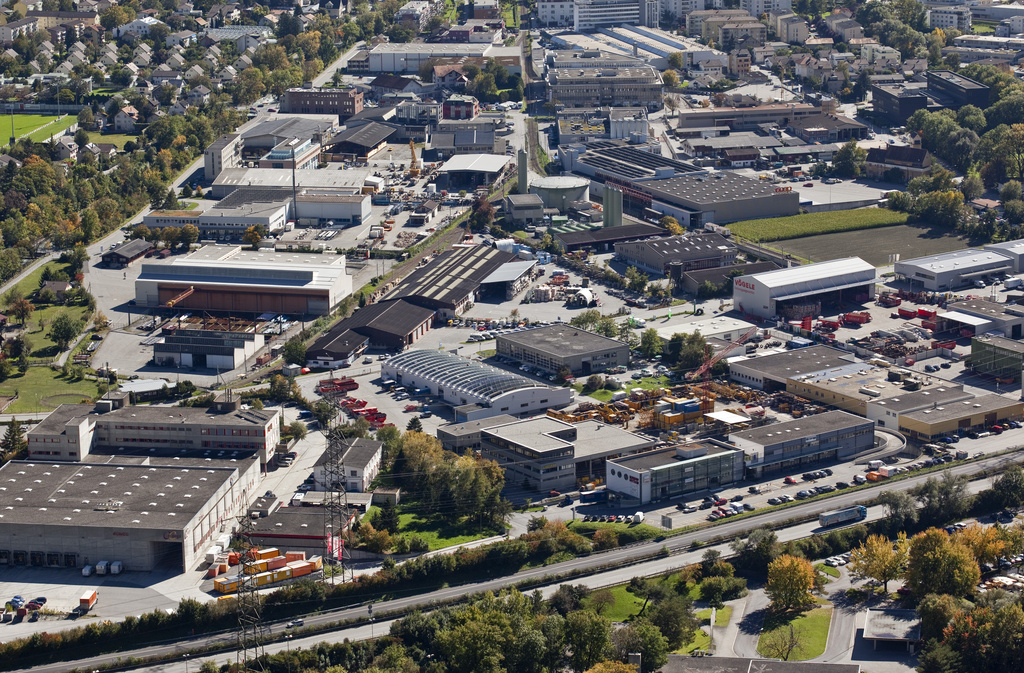Swiss SMEs are small but international

It is not only the giants of industry that are export-oriented. Swiss enterprises with fewer than 250 employees are also looking increasingly abroad.
In both cases, the logic is the same. Firstly, the domestic market is too small. Secondly, much of the demand comes from abroad. And thirdly, Switzerland’s economic interaction with the European Union has made access to European markets much easier for small and medium sized enterprises (SMEs).
“Size, therefore, has relatively little to do with the foreign business conducted by Swiss companies,” Rico Baldegger, a professor at the School of Business Administration in Fribourg told swissinfo.ch. He was referring to a poll of 625 export-oriented companies conducted by the school’s Institute for Entrepreneurship & SME, which he heads.
Small domestic market
The study says the large number of SMEs makes them “central” to Switzerland’s international success.
In the years 2007 to 2009 the firms questioned for the report generated over 50 per cent of their sales revenue from exports. This was the case even for the micro enterprises – defined as those with fewer than 10 employees; in the medium enterprises (those with between 50 and 249 employees) exports accounted for about 60 per cent.
According to Henrique Schneider, political secretary of the Swiss Trade Association – the umbrella organisation for SMEs – about a third of Swiss SMEs do business abroad. The share of exports in the turnover of all Swiss SMEs is estimated at between 30 and 40 per cent.
Baldegger attributes the high proportion of international activity to the small size of the domestic market and says that in general, SMEs in small countries are more globally oriented. In Switzerland there is the additional factor that many of these companies are very highly specialised, occupying niches in the market.
The more specialised a company is, the more international, he says. In comparison with SMEs in the rest of Europe, the degree of internationalisation in Swiss SMEs is unique, although similar trends can be seen in Finland, and, to a lesser extent, in Sweden, says Baldegger. But this trend is well advanced in Switzerland because many SMEs are oriented towards hi-tech and innovation.
Easier access to EU markets
The study says that one of the main factors encouraging Swiss SMEs to export is the broadening access to European markets as a result of bilateral agreements between Switzerland and the EU, which include the free movement of people and the reduction of customs duties.
Schneider agrees that this is very relevant, in part because it breaks down psychological barriers as well.
On the one hand, the agreements have made things simpler “not only in the bureaucracy, the chief enemy of the SMEs, but also over surcharges and technical requirements,” he explained.
And then the export process has a dynamic impact, too. “Once a lot of SMEs are active abroad, others want to try their hand at it too.”
But the process takes several years. The study says an SME only becomes an active exporter on average 8.6 years after it was founded. Schneider spoke of an “up-and-running period for the company to get used to its own field of business and then to prepare to go abroad”.
It takes about three years to build up a network abroad. And enterprises often start exporting by chance, for example after participating in a fair outside Switzerland, he added.
Exploiting skills
To build up a network in a foreign company many SMEs turn to Swiss already living in a given country to make use of their local knowledge and connections, Baldegger said.
The study names the “use of existing networks” – not only of expats – as one of the major reasons why SMEs go international. This was the fourth most popular reason cited by the businesses it polled, mentioned by 41 per cent. Conversely, the lack of a network was given by 17 per cent as one of the obstacles to the internationalisation process.
Should Switzerland’s immigration policy move further in the direction of “qualified foreigners” the trend towards making use of existing expat networks would grow stronger, Baldegger believes.
Switzerland needs to catch up in its cultural and social norms he says: as bilingual or multilingual secondos (the Swiss-born descendents of foreign immigrants, who do not automatically qualify for citizenship) many young Swiss would seem to be “born global” and be cut out for the export business, but have so far lacked the courage to set up their own projects after completing their educations.
SMEs are divided into three types:
Micro: fewer than 10 employees
Small: 10-49 employees
Medium: 50-249 employees
The study conducted by the Institute for Entrepreneurship & SME is based on a survey of 625 SMEs in all parts of Switzerland.
The survey was conducted between May and July 2010.
Of the businesses surveyed:
44.6 % were micro enterprises (average number of employees: 4)
40.2 % were small enterprises (average: 21)
15.2 % were medium enterprises (average: 108)
It showed that an average of 53.6 % of sales revenues were generated by exports in 2009 by SMEs as a whole, a figure that reached 60.5 % in the medium-sized ones.
(Adapted from German by Julia Slater)

In compliance with the JTI standards
More: SWI swissinfo.ch certified by the Journalism Trust Initiative





You can find an overview of ongoing debates with our journalists here. Please join us!
If you want to start a conversation about a topic raised in this article or want to report factual errors, email us at english@swissinfo.ch.